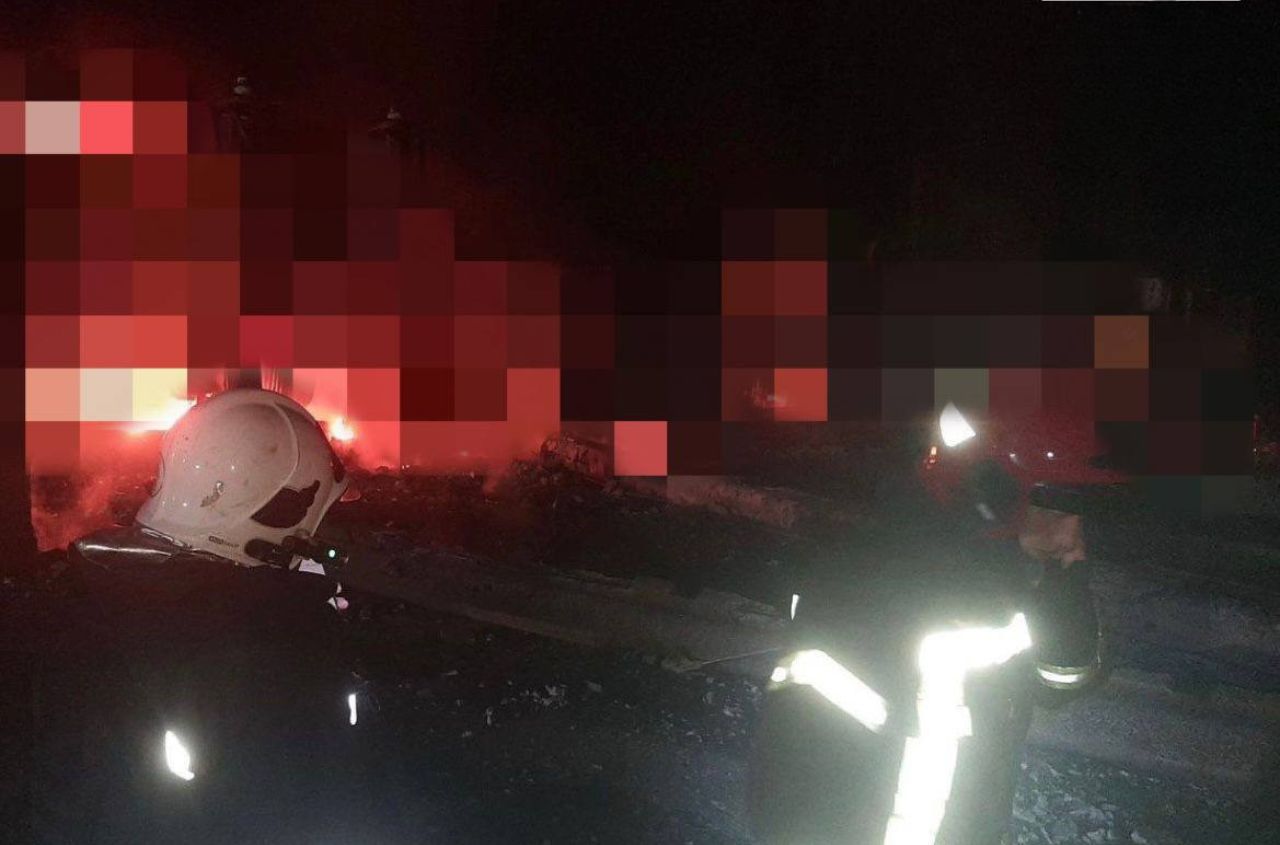If you think that Lebedivka is just a picturesque village in the Odessa region, where you can relax at quite affordable prices, you greatly underestimate this resort. For its more than two hundred years of history, he took on vacation and ordinary summer residents, and active businessmen and kings.
Considering the unique climate (a panacea for consumption) and the mud that healed joints and skin, at the end of the 19th century, the German health resort Bad Burnas began to develop here. The Germans, with their famous pedantry, set up villas and boarding houses here, planted gardens and parks. The resort became so famous that the Romanian king Mihai and the marshal of all times and peoples, the creator of the new Poland, Pilsudski and his family came here on the mud.
A little more than half a century has passed, and today's residents of the Danube region, for the most part, do not even know that the regional resort area near the village of Lebedevka, in the Tatarbunar region, was preceded by the German resort of Bad Burnas, which had international fame.
Today the system of salt lakes Sasyk-Shagani-Alibey-Burnas has the status of international wetlands. Within a radius of 100 kilometers, there are no industries, ports and major transport routes. Only vineyards and fishing villages. Absolutely clean sea, amazing air - a cocktail of sea salt air, steppe herbs and vapors of highly codified estuaries, rich marine fauna.

The clean, pale yellow and absolutely not clogged sand is striking, which in its composition also has medicinal properties. According to spa experts, few modern international resorts can boast of such "thalassotherapy".
Some sources contain information that allegedly Prince Potemkin, who visited these places, reported to Tsarina Catherine about the healing properties of the blue clay mud found in the local estuaries. Then, by her order, the queen set up the guard of this estuary from the Kuban Cossacks: "So that the treasures of Lake Burnas would be preserved for many years and serve for the benefit of their people." How much this information corresponds to reality is difficult to say today.
According to the peace treaty signed on May 28, 1812 after the Russian-Turkish war of 1806-1812. the lands of Bessarabia were transferred to the Russian Empire. Its southern part, formerly under the rule of Turkish Pashas and Tatar khans, was poorly populated. From the moment when the Nogai population left these lands, Bulgarians and Gagauz, who fled from Turkish reprisals, German colonists, Ukrainians and Russians began to move here.


The first colony of Basyrjamka in the area of ​​modern Lebedevka was formed by German emigrants from Württemberg, Palatinate and Polish lands who arrived in Bessarabia in 1814. German families were engaged in agriculture and animal husbandry, as well as the production of table salt, which the local estuaries were rich in. Already at the initial stage, the volume of its production here reached 40 thousand tons per year.
On the nearby seashore, German colonists set up a harbor and a warehouse for transporting grain and salt to Odessa, Nikolaev, Constanta and other ports of the Black Sea. This was the beginning of the history of the Bad Burnas resort, which later gained international fame.
At the beginning of the 20th century, massive construction of villas, summer cottages and mud baths began on the coast. Their construction and laying out of park areas continued until the First World War. During these years, famous historical personalities rested here and were treated here: the head of Poland, Jozef Pilsudski with his family, King Mihai of Romania, Russian nobles and even members of the Romanov royal family. Dignitaries took mud and carbon baths here, breathed the healing air and visited a luxurious restaurant, from the open veranda of which a magnificent view of the sea opened. Unfortunately, these buildings have not survived to this day.

In 1914-1918. The First World War destroyed all the plans and hopes of this region. In the post-war period, Bessarabia was annexed to Romania. During this period, an economic reorientation of the region takes place on the basis of a new geopolitics. Under these conditions, in 1921, a memorable council meeting was held in the village of Tarutino, the center of German settlements in Budzhak.
According to the stories of the old representative of the community, a wealthy German colonist, Mr. Johann Becker, proclaimed: “Today, after these difficult years of war, many people are suffering from its consequences. Poor people cannot, in most cases, buy expensive medicines. Therefore, they need a rest on the sunny seaside. In addition, there are many patients with rheumatism, and for this, the climate, salt and natural ooze in Bad Burnas are exactly the right remedies! â€.
This meeting was the starting point for the construction of a sanatorium in Bad Burnas. The official name of the business entity, which took over the arrangement of the resort, sounded like this: Joint Stock Company "Baths Burnas". Initially, the share capital of the company was 4 million lei. Soon, to implement its plans, the company acquires 5 hectares of pastures and arable lands on the Black Sea coast. The construction of a mud bath and a guest house begins. According to a new plan, villa sites were allocated and the Basyrjamka settler Jakob Schulz, despite snickering warnings, gladly began the “construction.†At this time, it was the thought of the German Bessarabian Company to put up a suitable spa and sanatorium (Heilanstalt) establishment where the German colonists could find accommodation, refreshments, and cure treatment.
At the beginning of 1924, a group of intellectual German colonists once again took up the idea of a health resort which brought into existence the immediate establishment of a Joint-Stock Company, under the official name: S.A. “Bäile Burnas.†Without delay, the company took on the task of putting up the basic structures. According to the plans and under the skilled leadership of the architect, engineer Christian Beutelsbacher, construction of a large spa facility and a residential building for the patients was begun, which could be completed in spring of 1925 and opened at the start of the bathing season.
The “Villa Village†is built according to a specific, drawn up plan with beautiful 17 meter wide streets, lined on both sides with trees. The whole spa terrain has a slight gradient toward the “Burnas†estuary, which encourages the rapid drainage of rain water, therefore, drying the streets and paths of the bath house and the sea beach. The distance from the most remote country houses by the sea and estuary beach is not more than 10 minutes; but barely 3 minutes from the nearest. The sea shore is not more than 10 meters high and, therefore, definitely not tiring to climb or descend, even for weak people. The beautiful wide dune with ample sea sand stretching many kilometers to the left and right of the spa site, is completely protected against sharp north winds and, therefore, creates the most ideal place for air, sand, and sun bathers. The beach is also very suitable for children since, due to the flat shore, they can go far into the sea without risk. The sea and steppe air is absolutely pure and very ozone rich; thanks to a persistent movement of air (a slight “Breezeâ€) via Lake Burnas to the large sand dune, in the direction of the sea, the air in Bad Burnas is not fouled up by the estuary air which the spa public in other health resorts often find so extremely annoying. The complete isolation of the resort from any human settlement guarantees the purity of the air, and also the rest so valued by the sick and suffering people. However, the main healing factors of the resort are what the bathhouse has to offer. The swimming pool is built according to the rules of modern technology: A very spacious recreation corridor with attendants for the public, large, bright, airy cabins providing bathing fixtures of beautiful, new, cast-iron, white enameled tubs. Very good drains in the bathhouse itself and on the grounds, all the way to the estuary, makes it possible for the bathhouse to be extremely sanitary.

Despite the not very favourable economic situation, the company's shares were in great demand. The board was very attentive to the selection of management personnel, and took care of the impeccable condition of the sanatorium. The proceeds were used to renovate and modernize existing buildings.
Until the 1940s, Bad Burnas received thousands of patients annually from various regions of Romania and foreign countries. Here they have successfully treated diseases of the musculoskeletal system, gynecological, skin diseases, rheumatism, arthritis and arthrosis, as well as diseases of the lungs and heart.
The institute has a permanent specialist doctor, spa-cure specialist, an experienced female medical assistant for massage, injections and such things, as well as nurses and a well trained service staff. The bathhouse is equipped with laundry and all necessary bath accessories. In the bathhouse, under the constant supervision of the physician and at a set hourly schedule, the following baths are administered for each individual patient: mud, sea, estuary and carbonic baths, for which a separate space is always available. Special light, airy single bathing huts are furnished for perspiration (sweating). Special baths are also provided for children.
Bad Burnas remained a resort of international importance until the outbreak of World War II.

After the Second World War. In 1940, Bessarabia, together with the resort was returned to the USSR. Descendants of German colonists were evicted from there, Germans were forcibly evicted from different regions, regardless of how long they had lived there. Plus, apparently, rumours that Luftwaffe servicemen were being rehabilitated at the resort during the war did not add credibility to local residents.
In 1945, the former resort was renamed Lebedivka and, neglecting its recreational potential, a collective farm and a fishing gang were established here. Later, between the sea and the forest on the site of the former resort of Bad Burnas, the modern recreation centers of the Lebedevka village were located. There they opened a sanatorium for children with polio, which worked from the early 50's to the late 80's.





In 1989 and 1992, the Ukrainian Scientific Research Institute of Medical Rehabilitation and Balneology assessed the quality of the mud of Lake Burnas. The work performed has confirmed their high value and large resource capacity.
However, the old German villas and sanatoriums in the village are still preserved. Therefore, you should go to Lebedivka not only to relax on one of the best beaches on the coast with healing mud and incredible views. There you can also feel like a guest of a German pre-revolutionary seaside resort like nowhere else in Ukraine.
Photo: Ukraine Incognita





















